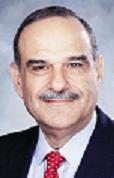Come back now, you hear ...

By Mark Hinson for the Tallahassee Democrat and Tallahassee.com:
This is the first time I've been back to New Orleans since the tropical-borne apocalypse of ’05. I did not know what I expected to find in the city that I called home in the late ’80s and early ’90s.
"So, what do you think?" everyone has been asking me as I make my way around the French Quarter, which was untouched by flooding and only lightly looted. I had no idea how to answer. The streets are cleaner than I've ever seen them and you can actually find parking. But there's a buzz — and I'm not talking about frozen drinks with silly names like Pit Bull on Crack — that's missing. There just are not as many people taking up as much space.
Down at Frankie and Johnny's, a funky restaurant near the Mississippi River, they've taken the signature crawfish pies off the menu. When I ask why, the waitress with the beautiful N'Awlins accent says: "Oh, dahlin', the cook who used to make the pies disappeared. He just left and never came back. We don't know where he is."
The merchants, jewelers, gallery-owners and bartenders who work along Royal Street in the Quarter are back, though, and ready to talk, baby. They practically hug us when my wife and I step into a store. They want to know what horror stories we've heard, why we're here, when we're coming back.
"Go home and tell everyone we're open and ready for business," jeweler Sylvia Weidert says.
"I can do that," I say.
My friends, who are both Big Easy exiles, have returned to New Orleans to get married on this beautiful fall night. They moved to Atlanta after Hurricane Katrina and the levee collapses crushed the city's economy. Just like Louis Armstrong, they really do know what it means to miss New Orleans.
As the wedding Mass comes to a finale, the wedding party packs up to move the celebration into the heart of the French Quarter. The reception is being held atop the old Jackson Brewery building — which is now a mall of shops and offices — with a terrace-top view of the Mississippi River. The food and wine flows before the famed Rebirth Brass Band enters the banquet room blasting joyous jazz music. The guests instantly form a second line, the same sort of street dance that generations have danced after funerals in New Orleans.
This isn't the music of the dead, I think to myself as I join the second line; it's the music of the living.
Maybe this city is going to be OK after all.






